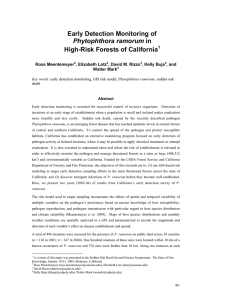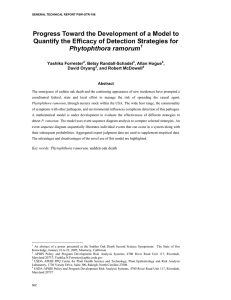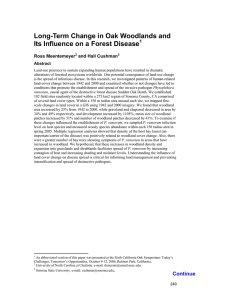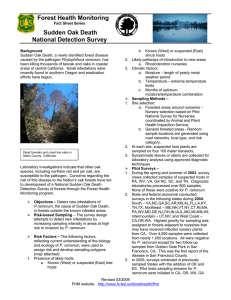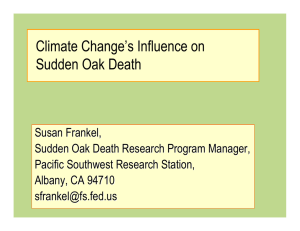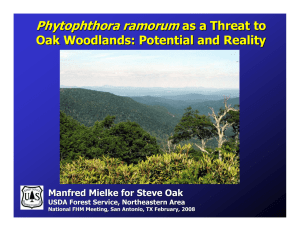Human Activity and Spread of the Pathogen Hall Cushman
advertisement
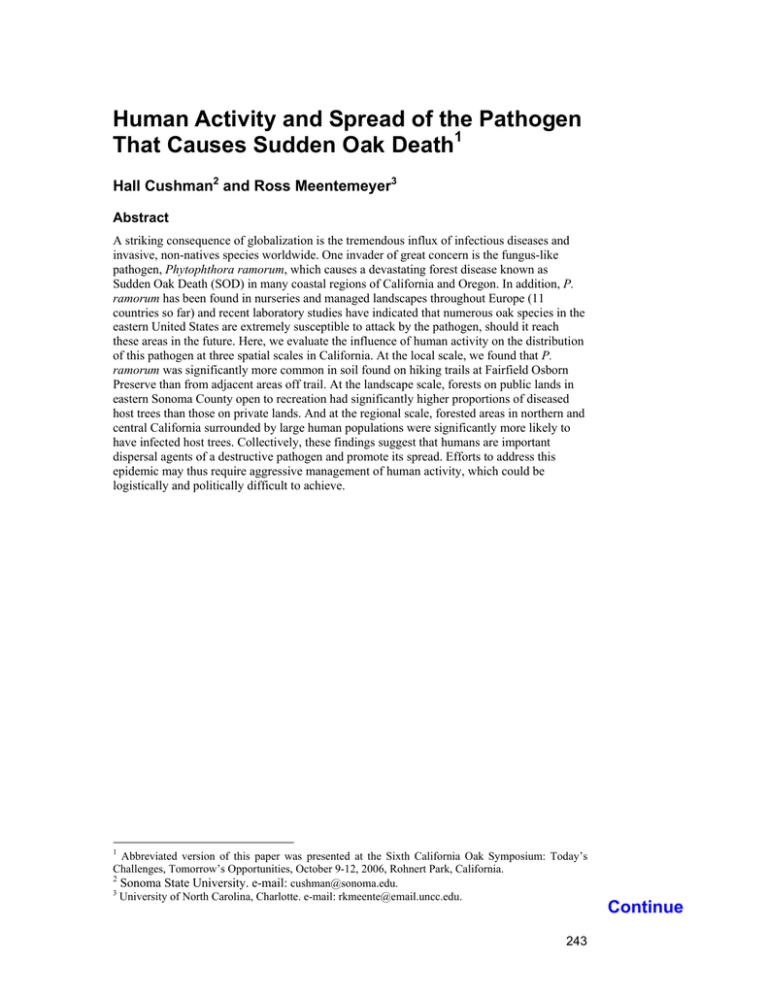
Human Activity and Spread of the Pathogen That Causes Sudden Oak Death1 Hall Cushman2 and Ross Meentemeyer3 Abstract A striking consequence of globalization is the tremendous influx of infectious diseases and invasive, non-natives species worldwide. One invader of great concern is the fungus-like pathogen, Phytophthora ramorum, which causes a devastating forest disease known as Sudden Oak Death (SOD) in many coastal regions of California and Oregon. In addition, P. ramorum has been found in nurseries and managed landscapes throughout Europe (11 countries so far) and recent laboratory studies have indicated that numerous oak species in the eastern United States are extremely susceptible to attack by the pathogen, should it reach these areas in the future. Here, we evaluate the influence of human activity on the distribution of this pathogen at three spatial scales in California. At the local scale, we found that P. ramorum was significantly more common in soil found on hiking trails at Fairfield Osborn Preserve than from adjacent areas off trail. At the landscape scale, forests on public lands in eastern Sonoma County open to recreation had significantly higher proportions of diseased host trees than those on private lands. And at the regional scale, forested areas in northern and central California surrounded by large human populations were significantly more likely to have infected host trees. Collectively, these findings suggest that humans are important dispersal agents of a destructive pathogen and promote its spread. Efforts to address this epidemic may thus require aggressive management of human activity, which could be logistically and politically difficult to achieve. 1 Abbreviated version of this paper was presented at the Sixth California Oak Symposium: Today’s Challenges, Tomorrow’s Opportunities, October 9-12, 2006, Rohnert Park, California. 2 Sonoma State University. e-mail: cushman@sonoma.edu. 3 University of North Carolina, Charlotte. e-mail: rkmeente@email.uncc.edu. 243 Continue


